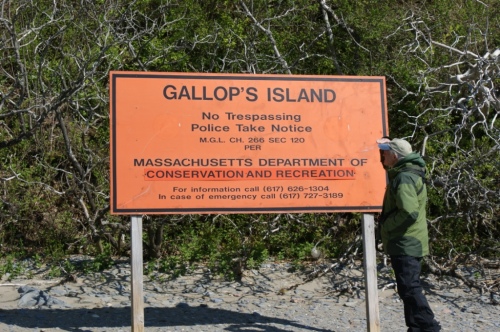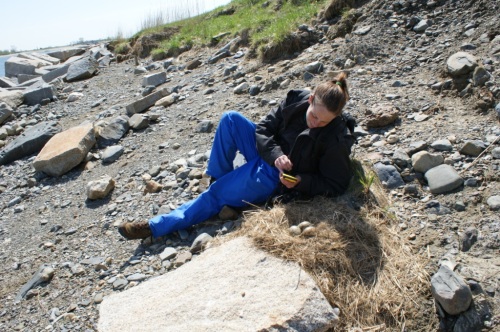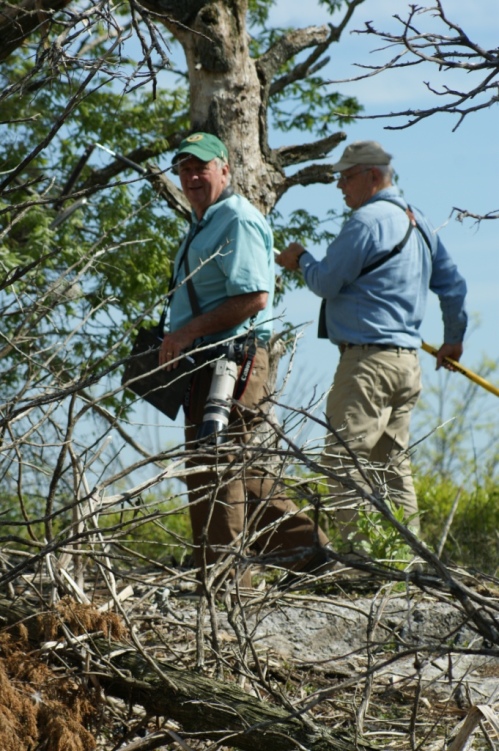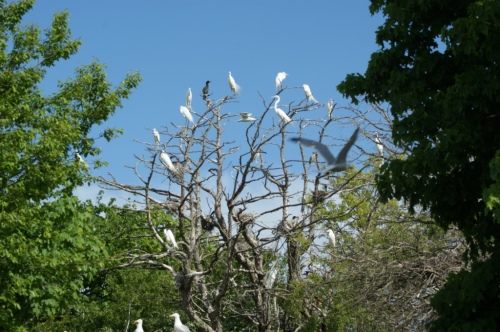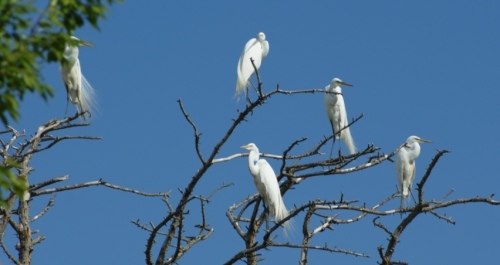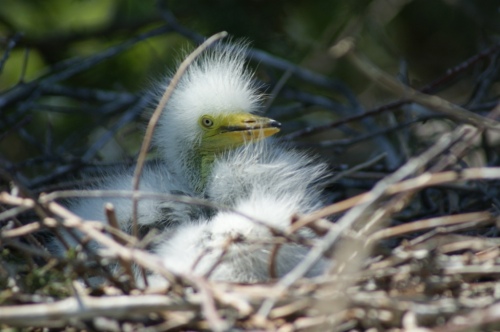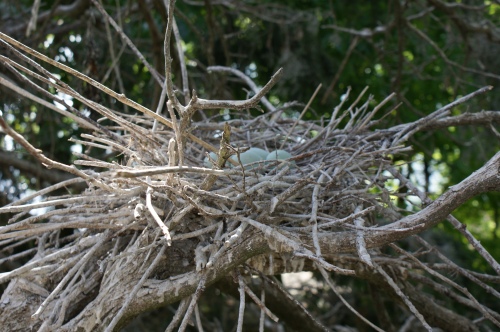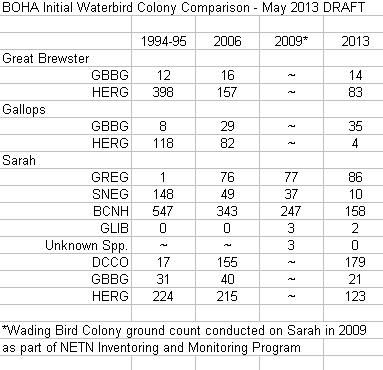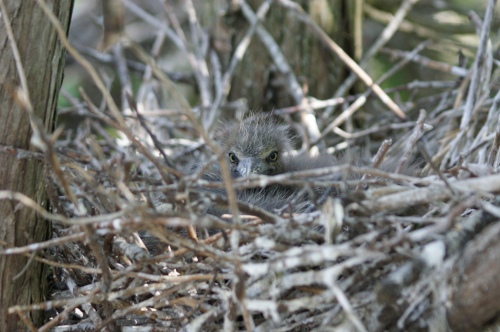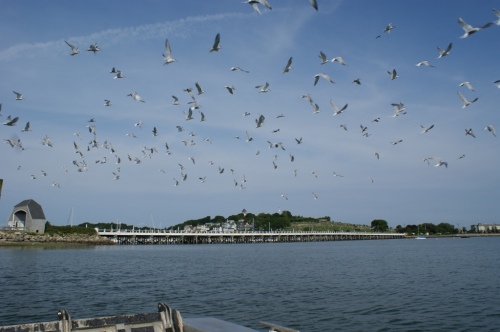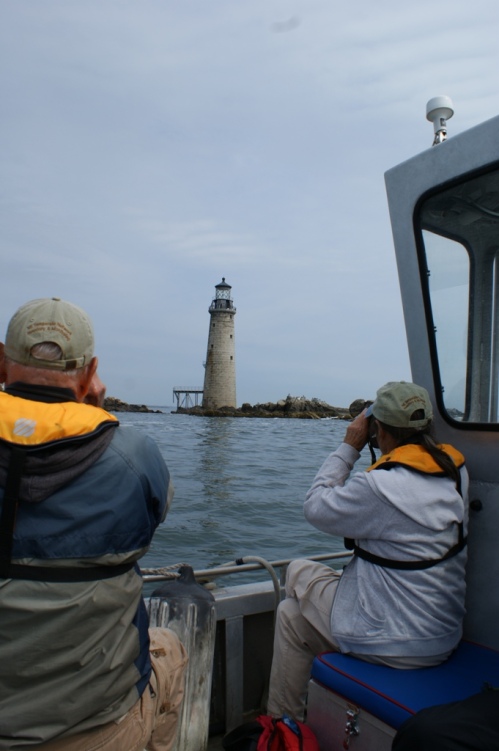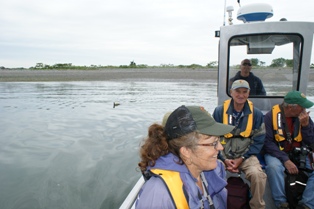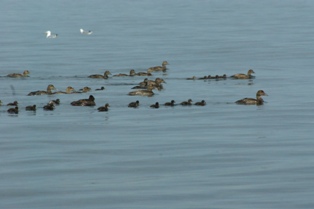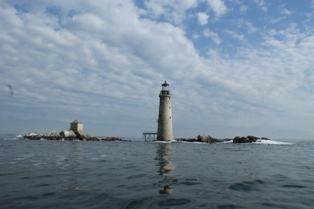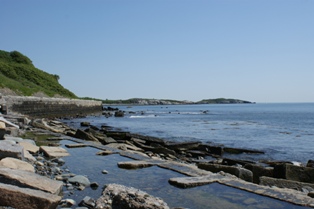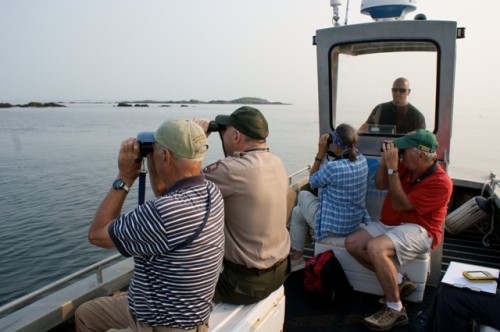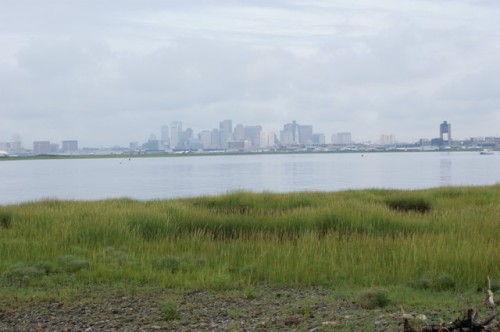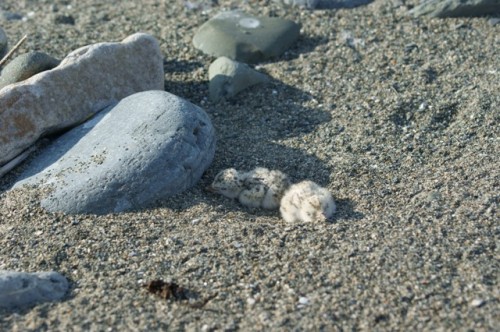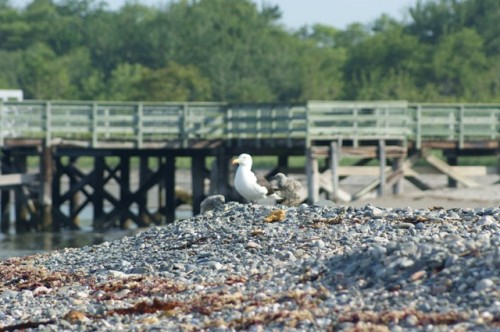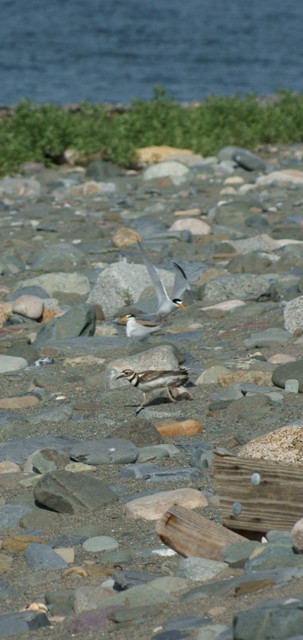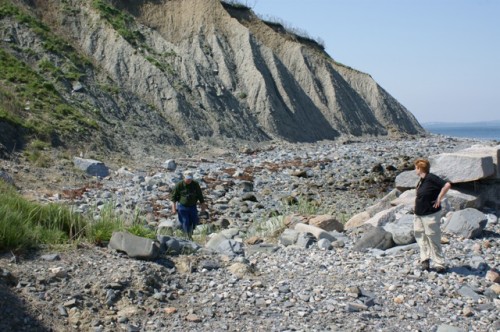We got the 2013 season off to a great start this week with eager and able volunteer crews and very cooperative weather!
On Monday, May 13th, we conducted ground-based counts on Great Brewster and Gallops Islands. (Thanks to DCR and Rob Lowell for permission and instructions for visiting Gallops which is currently closed to the public).
On Great Brewster, we had a total of 83 Herring Gull (HERG) nests and 14 Great Black-backed Gull (GBBG) nests, as well as one American Oystercatcher (AMOY) presumed to be nesting on the landing beach and another territorial pair on the south end of the island. We also flushed several Common Eider (COEI), though we did not comprehensively search for eider nests. On Gallops Island, we had 35 GBBG nests, 4 HERG nests, 2 COEI nests and 2 AMOY nests with locations known. New volunteers Carol and Alexis jumped right in… and got comfortable very quickly!
On Thursday, May 16th, we conducted a thorough ground-based count of Sarah Island. We detected a total of 123 HERG nests and 21 GBBG nests throughout the island, along with 179 tree-nesting Double-crested Cormorants (DCCO).
Wading bird numbers were down significantly from the last count in 2009, though Great Egrets seem to be holding their ground.
In total on Sarah we found 158 Black-crowned Night Herons (BCNH) nests, 86 Great Egret (GREG) nests, 10 Snowy Egret (SNEG) nests, and 2 Glossy Ibis (GLIB) nests. We also found 5 pairs of nesting Canada Geese, 2 America Black Duck nests, and a Common Grackle nest in amongst the waders. In addition, there was a pair of territorial AMOY on the south side of Sarah, though no nest was detected.
Our timing was great this year – most of the waders were on eggs with just a few nests of young GREGs and BCNHs. This timing is ideal to maximize information about the full season’s nesting effort, but minimize the disturbance we create at the colony site. We did notice a large number of Black-crowned Night Herons in the trees on Langlee Island that did not appear to be birds flushed from Sarah, but a quick landing on Langlee did not turn up any signs of nesting there.
Below is a draft comparison of numbers from these 3 sites from the State census counts in 1994-5 and 2005-6, as well as our wader numbers from Sarah in 2009. Unfortunately, it doesn’t paint a very pretty picture at first glance… This year, colonial nesting bird surveys are being conducted not only throughout the rest of Massachusetts, but also region-wide from Virginia to Maine. It will be very interesting to see the results come in and find out if the trends we are seeing in Boston Harbor match what is happening in the rest of the region.
Next week we are planning to get to the wading bird colony on Sheep Island and hopefully learn what others are finding out about ‘our’ birds on Outer and Middle Brewster and Calf Islands, which are also being surveyed this year. More soon – Happy Spring!
